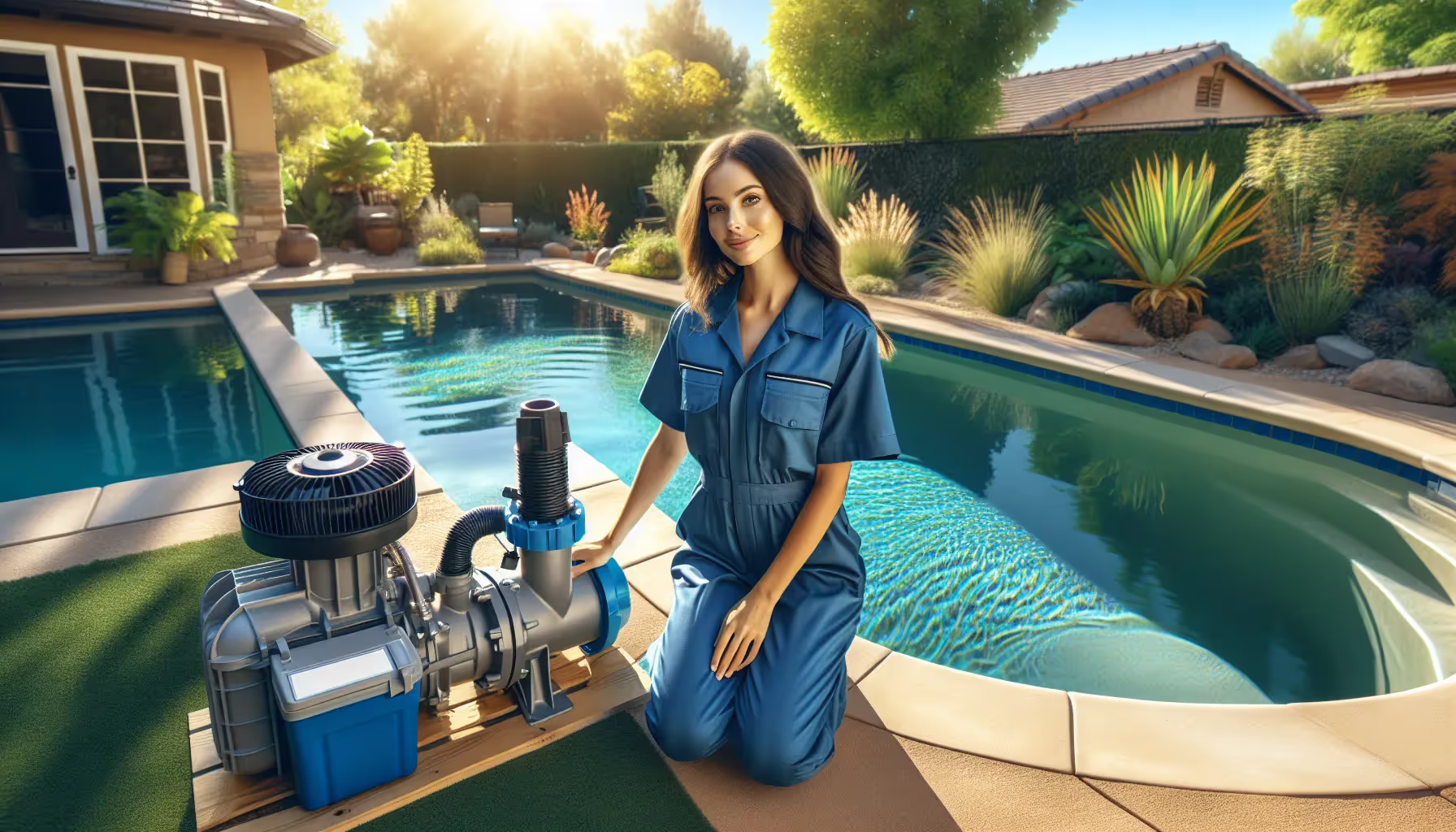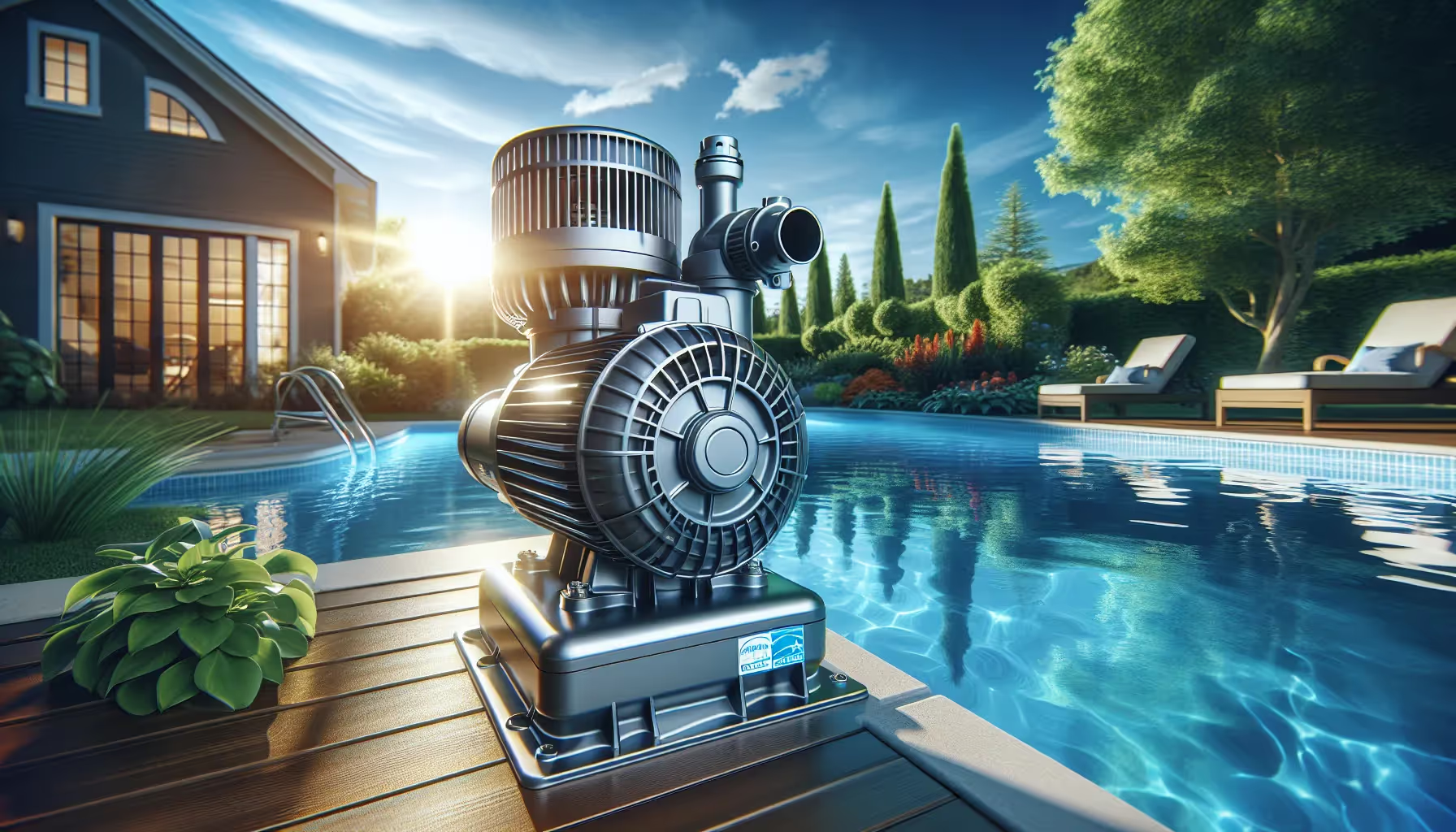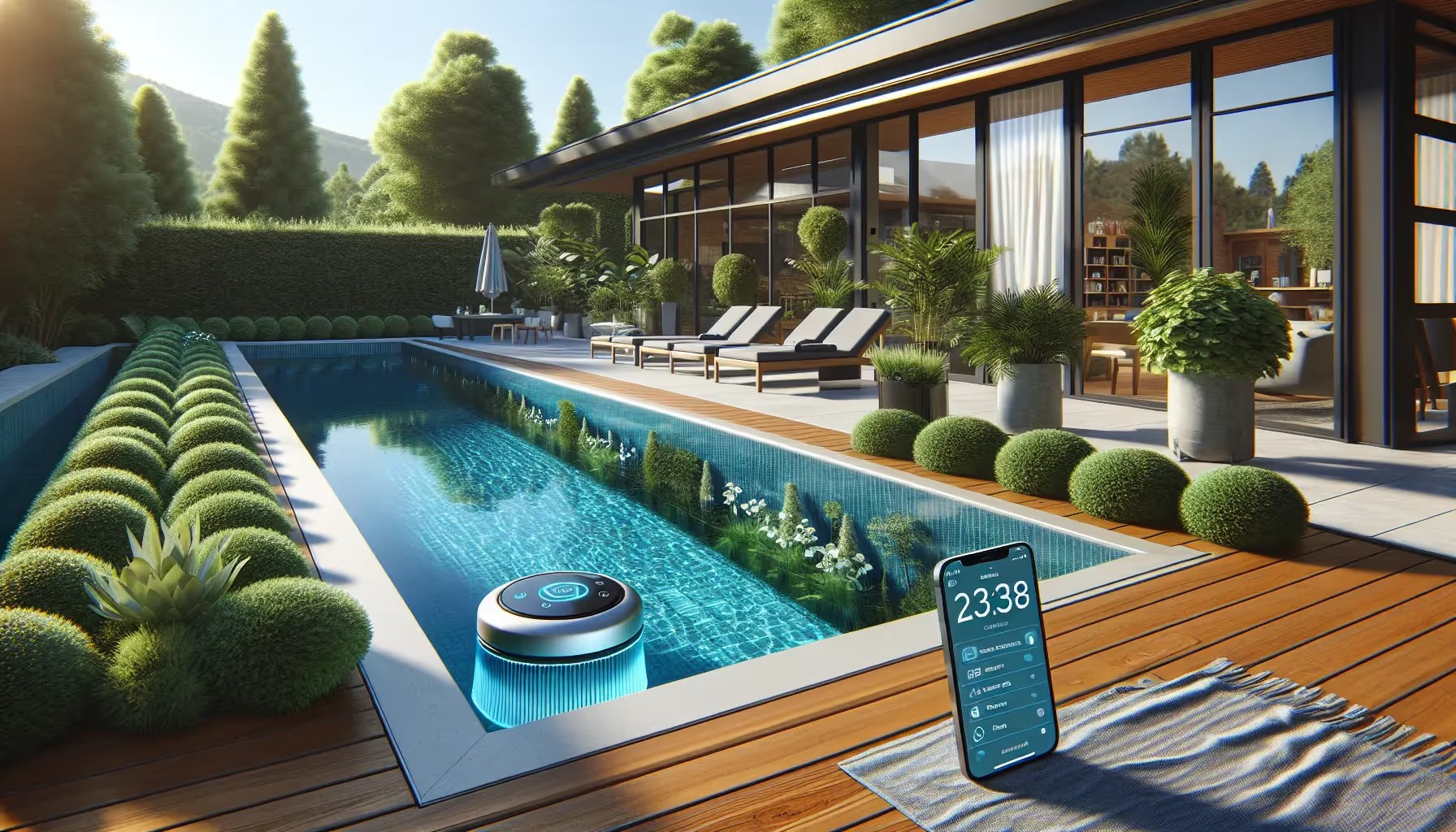Key Takeaways
- Understand Pool Pump Types: Familiarize yourself with single-speed, variable-speed, and dual-speed pumps to choose the best option based on pool size and use cases.
- Prioritize Energy Efficiency: Opt for Energy Star-rated pumps, particularly variable-speed models, to significantly reduce energy costs and enhance sustainability.
- Evaluate Customer Needs: Assess factors such as pool size, accessories, and turnover rates to ensure that the selected pump meets specific customer requirements efficiently.
- Consider Noise Levels and Durability: Select pumps that not only perform well but also operate quietly and are built with durable materials for long-lasting use.
- Analyze Service Scenarios: Differentiate between residential and commercial pool needs, and consider whether the pool is used seasonally or year-round to make informed pump selection decisions.
- Focus on Maintenance Ease: Look for pumps designed for easy access to filters and parts to simplify routine checks and maintenance, enhancing customer satisfaction.
Selecting the right pool pump can make a world of difference for our customers. With over 10 million residential swimming pools in the U.S., the demand for efficient and effective pool pumps is higher than ever. A well-chosen pump not only enhances water circulation but can also reduce energy costs by up to 30%.
Understanding different service scenarios is crucial. Whether it’s for a small above-ground pool or a large in-ground installation, each situation requires tailored solutions to meet specific needs. By exploring the factors that influence pump selection, we can ensure our clients enjoy optimal performance and satisfaction, ultimately leading to a healthier swimming environment. Let’s dive into the essentials of choosing the right pool pump.
Understanding Pool Pumps
Choosing the right pool pump involves knowing different types and key features to meet various customer needs. With the right pump, pool maintenance becomes straightforward and efficient.
Types of Pool Pumps
We can categorize pool pumps into three main types:
- Single-Speed Pumps: Single-speed pumps operate at a constant speed. They are usually less expensive upfront but can lead to higher energy costs over time. Ideal for smaller, less frequently used pools, these pumps get the job done without extra features.
- Variable-Speed Pumps: Variable-speed pumps allow users to adjust the speed based on specific tasks. From circulation to filtration, they tailor the flow to what’s needed at any moment. These pumps are more energy-efficient and can save homeowners up to 90% on energy bills.
- Dual-Speed Pumps: Dual-speed pumps provide two speed options. Users can switch between a high-speed setting for filtration and a low-speed setting for regular circulation. This flexibility makes them a good choice for medium to large pools.
Choosing the best type depends on the pool size and usage. Have you ever found yourself wishing you could adjust your pump speed?
Key Features to Consider
When evaluating pool pumps, several features are worth our attention:
- Energy Efficiency: A pump's efficiency can significantly affect operational costs. Look for Energy Star-rated models, which can help save on electricity bills while promoting sustainable practices.
- Noise Level: Some pumps sound like a jet engine taking off, while others are whisper-quiet. A quieter model enhances the swimming experience, especially during late-night swims.
- Durability: Choose materials that resist corrosion and withstand harsh conditions. For example, higher-quality pumps may have reinforced components for longevity.
- Ease of Maintenance: Pump design impacts how easy it is to perform routine checks and repairs. Models that offer easy access for cleaning filters or changing parts will save time and effort.
- Smart Features: For those into tech, look for pumps with automation capabilities. Homeowners can manage pool functions remotely through a mobile app, turning pool maintenance into a breeze.
What features matter most to you? Share your thoughts as we explore more about choosing the right pump for the perfect pool experience.
Assessing Service Scenarios

Choosing the right pool pump involves evaluating specific service scenarios. Understanding these scenarios allows us to provide efficient solutions that meet diverse needs.
Residential vs. Commercial Pools
Selecting pumps for residential and commercial pools requires different approaches. Residential pools, which can number over 10 million in the U.S., often have unique needs. Factors such as pool size, plumbing diameter, and filter flow rate matter. A variable-speed pump offers energy efficiency and suits most residential settings. If we have a spa attached, we might consider a two-speed pump to meet the higher flow demands.
Commercial pools, on the other hand, need pumps capable of handling significant water circulation. Here, we assess the pool's size, shape, depth, water turnover rate, and desired flow rate. Energy efficiency remains crucial, as these pumps operate continuously. Understanding these differences allows us to make informed decisions tailored to each setting.
Seasonal vs. Year-Round Use
For seasonal pools, lower-capacity pumps often suffice. These pools aren't used year-round, so durability and ease of maintenance get priority. Energy efficiency isn't as pressing, but reliability remains essential for maintaining clean, clear water.
In contrast, year-round pools demand an energy-efficient solution. A variable-speed pump adapts to varying flow needs, minimizing operational costs. We want a durable design, one that can withstand continual use, which helps us avoid frequent replacements. By recognizing the differences in usage patterns, we pick pumps that not only meet immediate needs but also contribute to long-term satisfaction.
Understanding these scenarios enhances our overall approach to pool maintenance, leading to a healthier swimming environment and satisfied customers.
Customer Needs Analysis

Understanding customer needs shapes pool pump selection. We consider factors like pool chemistry, cleanliness, and accessories to meet specific requirements.
Pool Size and Volume
Calculating pool volume plays a crucial role in selecting a pump. Start by measuring dimensions. For rectangular pools, multiply length by width by depth. For circular pools, use the formula πr²h. Once we have cubic feet, multiply by 7.48 for gallons.
Next, we need to assess turnover rates. A swimming pool typically requires a turnover rate of 8 hours. For example, a 20,000-gallon pool needs a pump with a flow rate of 41.67 gallons per minute (GPM). Matching pump capacity with pool volume guarantees effective circulation.
Water Features and Accessories
Water features add charm but require more flow. Adding jets, fountains, or waterfalls increases the needed flow rate. For instance, if your pool features a waterfall, we must consider its specific flow demands.
Calculating total dynamic head (TDH) becomes essential. Account for the height and friction loss in pipes. The total dynamic head influences pumping efficiency. A well-chosen pump accommodates all features, ensuring clarity and cleanliness.
By analyzing these aspects, we identify the right pump, leading to optimal performance and satisfied customers.
Selecting the Right Pool Pump

Choosing the right pool pump can become quite the adventure. It’s a decision that impacts efficiency, performance, and satisfaction. We aim to guide you through this journey, focusing on key aspects that make a pool pump suitable for your specific needs.
Energy Efficiency Considerations
Energy efficiency plays a crucial role in selecting a pool pump. Look for pumps bearing the Energy Star certification, as they show reduced energy consumption. Think about variable-speed pumps; they adapt their speed according to pool requirements, often cutting energy costs significantly. For instance, a variable-speed pump can save up to 80% of energy costs compared to single-speed models. Keeping energy savings in mind not only benefits the environment but also our wallets.
Noise Levels and Aesthetics
Noise levels matter, especially if your pool is a social hub. Pumps with noise-reducing features can make a big difference. For example, quieter motors and sound-insulating enclosures can make pool time enjoyable without the din of a roaring motor interrupting conversations. Plus, aesthetics play a part; pumps that blend seamlessly with the surroundings can enhance the visual appeal of our pool areas. We might think of the pump as just a piece of equipment, but it contributes to the overall ambiance. Who wants to gaze at an unsightly pump while sipping a tropical drink? Let’s strive for both functionality and style!
By focusing on energy efficiency and aesthetic considerations, we can select pumps that align with our values and preferences.
Conclusion
Choosing the right pool pump is essential for maintaining a healthy and enjoyable swimming environment. By understanding our specific needs and the various service scenarios, we can make informed decisions that enhance both performance and efficiency.
Whether we have a small above-ground pool or a large commercial setup, the right pump can lead to significant energy savings and improved water circulation. Prioritizing features like energy efficiency noise levels and durability will not only optimize our pool experience but also contribute to long-term satisfaction.
As we navigate the selection process, let’s focus on finding pumps that align with our values and preferences while ensuring that our pools remain inviting and well-maintained.
Frequently Asked Questions
What is the importance of selecting the right pool pump?
Choosing the right pool pump is crucial for improving water circulation and reducing energy costs. A well-selected pump can enhance the overall maintenance of your pool and contribute to a healthier swimming environment.
What types of pool pumps are available?
There are three main types of pool pumps: single-speed, variable-speed, and dual-speed pumps. Each type is designed to suit different pool sizes and usage patterns, providing tailored solutions for homeowners.
How does energy efficiency affect pool pump selection?
Energy efficiency is essential when choosing a pool pump, as it can lead to significant cost savings. Variable-speed pumps are particularly efficient and can save users up to 80% in energy compared to traditional single-speed models.
How do I determine the right pump flow rate for my pool?
To determine the right flow rate for your pool, calculate the pool's volume and ensure the pump meets the turnover rate. For example, a 20,000-gallon pool requires a pump with a flow rate of about 41.67 gallons per minute.
What should I consider regarding noise levels in pool pumps?
Choosing a pump with low noise levels can enhance your swimming experience. Quieter pumps can add to the enjoyment of your pool while minimizing disruption in your outdoor space.
How do water features affect pump selection?
Water features like jets and waterfalls can impact the required flow rate of your pump. When selecting a pump, consider these additions to ensure efficient water circulation and balanced performance.
What is total dynamic head (TDH) in pool pump selection?
Total dynamic head (TDH) measures the total resistance a pump must overcome to circulate water. Understanding TDH is essential for selecting a pump that performs efficiently and meets your specific pool needs.
How do I choose a pump for seasonal vs. year-round use?
For seasonal pools, lower-capacity pumps may suffice, while year-round pools benefit from energy-efficient variable-speed models for optimal performance and cost-effectiveness throughout the year.






